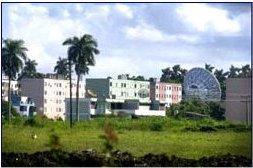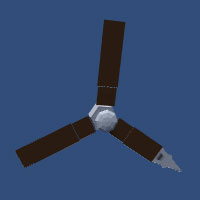

Landsat 9, like Landsat 8, is both radiometrically and geometrically better than earlier generation Landsats. An uplink in computer networking refers to a wired or wireless connection from a local area network (LAN) to a wide area network (WAN). Landsat 9, like Landsat 8, has a higher imaging capacity than past Landsats, allowing more valuable data to be added to the Landsat global land archive-around 1,400 scenes per day. The combined Landsat 8 + Landsat 9 revisit time for data collection with be every 8 days, like it currently is for Landsat 8 + Landsat 7. When not involved with space shuttle launch communications, I have heard other encrypted voice communications on this FLTSATCOM Bravo, channel 6 downlink. Landsat 9 replaces Landsat 7 (launched in 1999), taking its place in orbit (8 days out of phase with Landsat 8). Landsat 9, launched September 27, 2021, joins Landsat 8 in orbit the satellite orbits are 8 days out of phase. Landsat 9 will collect data at the same rate as Landsat 8. Landsat 8 has added more data per year than any proceeding satellite.
Station 7 downlink archive#
archive contributed by each Landsat satellite as of Sept. Sustainable Land Imaging Program, Landsat 9 has a design very similar to Landsat 8’s which allowed the Landsat 9 build and launch to be expedited. Since reducing the risk of a Landsat data gap is a high priority of the U.S. Image credit: USGS/NASA More data | Better data Landsat 9 now collects data at the same rate as Landsat 8.

TESAT launched its first NewSpace CubeLCT terminal on PIXL-1 in. Some lessons learned along the way are presented as Planet transitioned from building and operating a few prototypes to a production constellation of over 100 satellites and 22 active ground stations.Landsat data in the U.S. KSAT has installed the worlds first commercially available optical ground station in Greece. Abstract: Very recent studies showed that the area spectral efficiency (ASE) of downlink cellular networks will continuously decrease and finally crash to zero as the base station (BS) density increases toward infinity if the absolute height difference between BS antenna and user equipment antenna is larger than zero. The latest generation HSD system is capable of providing downlink volumes of 12-15 GB during a single ground station pass, which has a duration of 7 to 10 minutes.

Commercial standards, such as the DVB-S2 modulation and coding suite, have been used where appropriate. Planet's X-band ground station network includes 22 active dishes across 8 sites located around the world. The HSD operates at X-band and is built using commercial-o-the-shelf (COTS) parts with a high-gain spacecraft antenna and reasonably sized ground station antennas (4.5m - 7.6m diameter reflector).
Station 7 downlink download#
This paper presents an overview of the latest generation compact, low-mass, and low-power High Speed Downlink (HSD) radio that was built and deployed on over 100 3U form-factor Dove satellites that form Planet's Mission 1 constellation. Download scientific diagram Uplink and downlink channel path from publication: Physical layer impairments in. Planet has overcome the downlink data rate limitation by optimizing every part of the radio communication system to achieve over 220 Mbps peak and 160 Mbps average data throughput. The signal is transmitted from the first earth station to the second earth station such that there are two uplinks and two downlinks between the earth stations. Historically, CubeSat radios have been downlink limited because of size, weight, and power (SWaP) constraints. To achieve this objective, Planet has launched over 250 satellites and built the mission control and ground station infrastructure to autonomously monitor and control the satellites and download their data. Planet's mission is to monitor global change by imaging the entire Earth every day.


 0 kommentar(er)
0 kommentar(er)
